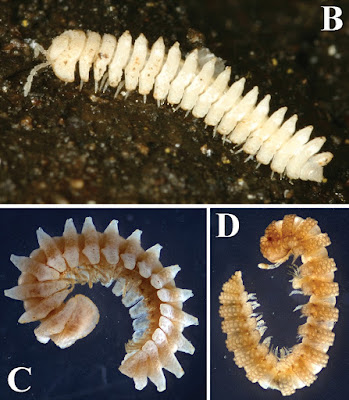![]() |
[upper] Sigalegalephrynus mandailinguensis from Gunung Sorikmarapi,
[lower] Sigalegalephrynus minangkabauensis from Gunung Kunyit,
Sumatera Utara Province, Sumatra, Indonesia
Smart, Sarker, Arifin, Harvey, Sidik, Hamidy, Kurniawan & Smith, 2017 |
Abstract:
We describe a new genus and two new species of toads from the Sumatran volcanoes Gunung Sorikmarapi and G. Kunyit, in the provinces of Sumatera Utara and Jambi, respectively. The new taxa can be distinguished from other genera, and each other, based on genetic differentiation, morphology, and advertisement call structure. We employ both nuclear and mitochondrial data to provide a phylogenetic hypothesis of relationships for the bufonid genera of the Sunda Shelf. While broadly corroborating previous studies, our results also shed light on the phylogenetic position of Pseudobufo. The new genus, Duttaphrynus, and Pseudobufo are basal to other Sunda Shelf genera in our phylogenies.
Keywords: Barisan Range, Bufonidae, Molecular phylogenetics, Sunda Shelf, Taxonomy
Sigalegalephrynus gen. nov.
Type species.— Sigalegalephrynusmandailinguensis by present designation.
Etymology.— The generic name is derived from the name given by the indigenous Batak people of the Toba region in Sumatera Utara to life-sized wooden puppets called Sigale Gale. These puppets are used during the papurpur sepata funerary festivals to placate the spirits of the dead who have left no children behind. The suffix is derived from the masculine and Latinized Greek noun for toad, phrynos. The new genus, with a relatively large size compared with most arboreal toads in the region, lanky hands, and a wood-brown complexion, is evocative of the Sigale Gale.
Common name.— Puppet Toads.
Content.— Our phylogenetic analyses indicate the presence of two species within the new genus: S. mandailinguensis Smart et al.; and S. minangkabauensis Smart et al.
![]() |
[Left] Lateral view of the adult male holotype of Sigalegalephrynus mandailinguensis from Gunung Sorikmarapi, Sumatera Utara Province, Sumatra (MZB 25736).
[right] Lateral view of the holotype of Sigalegalephrynus minangkabauensis from Gunung Kunyit, Sumatera Utara Province, Sumatra (MZB 25738). |
DESCRIPTIONS OF NEW SPECIES
• Sigalegalephrynus mandailinguensis sp. nov.
Etymology.— The specific epithet is an adjective referring to the Mandailing Batak ethnic region and Kabupaten (regency) where the new species was found.
Common name.— Mandailing Puppet Toads.
Distribution and natural history.— Sigalegalephrynus mandailinguensis is known only from rainforests on the slopes of Gunung Sorikmarapi in southern Sumatera Utara.....
• Sigalegalephrynus minangkabauensis sp. nov.
Etymology.— The specific epithet refers to the Minangkabau or Minang ethnic group inhabiting the region where the new species was found.
Common name.— Minangkabau Puppet Toads.
Distribution and natural history.— Sigalegalephrynus minangkabauensis is known only from Gunung Kunyit from an elevation of 1428 m (Fig. 4).
Utpal Smart, Goutam C. Sarker, Umilaela Arifin, Michael B. Harvey, Irvan Sidik, Amir Hamidy, Nia Kurniawan and Eric N. Smith. 2017. A New Genus and Two New Species of Arboreal Toads from the Highlands of Sumatra with a Phylogeny of Sundaland Toad Genera.
Herpetologica. 73(1); 63-75. DOI:
10.1655/Herpetologica-D-16-00041
Abstrak (Indonesian): Kami mendeskripsikan satu marga baru dan dua jenis baru kodok dari wilayah gunung api di Provinsi Sumatera Utara (Gunung Sorik Merapi) dan Provinsi Jambi (Gunung Kunyit). Takson baru ini dapat dibedakan satu sama lain maupun dengan marga kodok lainnya berdasarkan perbedaan genetik, morfologi, dan struktur suara panggilan kodok tersebut. Kami menggunakan data DNA mitokondria dan DNA inti kodok-kodok dari famili Bufonidae yang terdapat di wilayah Paparan Sunda untuk membuat hipotesis filogenetik mengenai hubungan kekerabatan antar marga kodok tersebut. Secara umum, hasil penelitian yang kami peroleh mendukung hasil penelitian-penelitian sebelumnya. Di samping itu, kami juga menemukan untuk pertama kalinya bahwa posisi filogenetik Pseudobufo dan marga baru berada di bagian paling dasar dari seluruh marga katak di daerah Paparan Sunda, dengan pengecualian pada marga Duttaphrynus.






























































